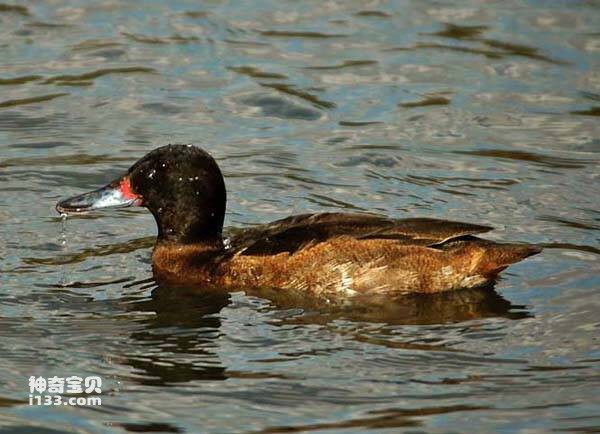Heteronetta atricapilla
IUCN
LCBasic Information
Scientific classification
- name:Heteronetta atricapilla
- Scientific Name:Heteronetta atricapilla,Black-headed Duck
- Outline:Waterfowl
- Family:
Vital signs
- length:No textual research information is available
- Weight:No textual research information is available
- lifetime:No textual research information is available
Feature
It is believed to be the only pure-egg bird, as no nests have been found
Distribution and Habitat
It is distributed in Argentina, Bolivia, Brazil, Chile, Paraguay and Uruguay.
Traveler: Falkland Islands (Malvinas Islands).
It lives in ponds, lakes, reservoirs and other waters, but also appears in swamps and ponds and streams covered with plants around the forest. Like to hide in tall grass or lotus leaves, but also live in groups on the water.
Appearance
The black-headed duck is a member of the hard-tailed duck subfamily, having long, stiff tail feathers that may sink into the water while swimming, but may sometimes stand up. Although it is related to the hard-tailed duck, it is similar to the common duck in appearance. It lacks the swollen bill of the hard-tailed duck, very similar to a typical dive duck, with featuresless plumage, and is a dark duckling, with the male having a black head and back, slightly pale flanks and abdomen, and the female having light brown plumage overall.
Details
The Black-headed Duck (scientific name: Heteronetta atricapilla) is a black-headed duck with no subspecies.

Black-headed ducks can feed both on the surface and under the water, and sometimes on the ground near the water to forage for grass. The food is mainly plant food such as rice, crop seedlings, grasses and aquatic plants, but also animal food such as insects, snails, mollusks, frogs and small fish.

Black-headed ducks breed in a unique way: they nest parasitically and do not incubate their own eggs, but lay them in the nests of diving ducks or coot chickens. The black-headed duck and cuckoo and other nest parasitic birds are different, the black-headed duck only uses other birds to hatch, but does not harm the eggs and young birds of other birds, and does not need other birds to raise young birds, but the ducklings can live independently immediately after hatching, and do not need the care of adults. (The sweet mother-child picture in Figure 6 shows that the duckling still needs to live with the mother duck, but the mother duck is probably the foster mother.) This breeding habit is unique among birds.
Listed on the International Union for Conservation of Nature (IUCN) 2012 Red List of Threatened Species ver3.1 - Low Risk (LC).
Protect wild animals and eliminate wild meat.
Maintaining ecological balance is everyone's responsibility!








